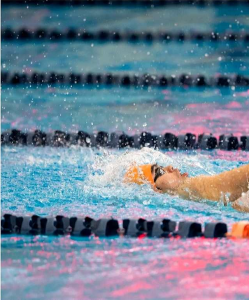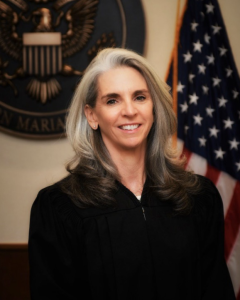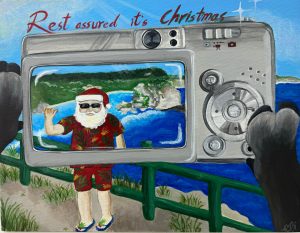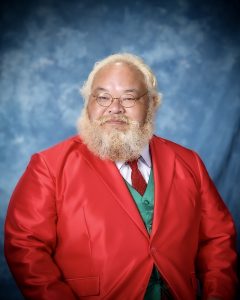Feelings on the flag
Recently, a video circulated on social media showing the Commonwealth flag being burned. For many of us who watched the video, these emotions may have come to mind: shock, anger, disgust. To burn a flag usually is a statement of protest, and many groups and organizations have done it to make various statements.
Watching that video today brought a lot of emotions in me, very strong ones. But rather than address the party at play, I would rather address the act itself. Burning the flag is an act that not only an act of protest, but here in the CNMI, it is illegal. As evident of the many people who shared 1 CMC §223 in response to the video. This act was meant to send a message, but what it did as well was attract feelings of negativity and outrage.
One reason for the act, a denunciation of its display. True, we all have personal feelings of what the ideal banner of the Northern Marianas should be, but as citizens of Northern Marianas descent, the flag we have is one that our elders decided would be the fairest representation of all of us. And it was not a decision made in a whim, it was a decision made with thought and consideration for everyone alive at the time who called Saipan, Tinian and Gåni home.
It was through the creativity of the late Douglas Rankin where its look came about, and it became our official flag through Amendment 43 of the Commonwealth Constitution. And going back to Commonwealth Code, Public Law 6-11 governs the dimensions and depth of its central image among others. Growing up as a kid, I remember asking my father what did the flag symbolize, and he would tell me what each portion of it meant.
That alone, was something that triggered my interest in knowing more of not just who I was, but our history as a whole. That curiosity led me to being a cultural practitioner, and the flag instilled a feeling of respect for the islands I was a citizen of. And that flag is what makes all of us proud of these islands, regardless of what culture we may identify as.
Yes, both our constitution and the U.S. Constitution allow us to express ourselves and our beliefs the way we want to. But, it’s one thing to do it through peaceful avenues, and another to do it via illegal means. This statement was done to get under the skin of some, but it riled up the skin of many, because of the love they have for the flag.
Answer this, how many students who have graduated from high school, colleges and universities at home and around the world have turned their tassels with either the flag’s image on their caps or on sashes that adorned their necks? How many NMDers from the 670 ask their parents and relatives to send them a CNMI flag, or order one from a flag website just so they can show their neighbours where they’re from and who they are on their block? And how many servicemen and women took that flag with them into battle in war zones such as Iraq, Afghanistan, and Kuwait?
It will take you a lifetime just to even guess. You see, the flag is more than just a square of woven nylon with a latte stone and a flower wreath screen printed onto it, it is a fabric that is woven into every facet of our society, into our collective identity as Northern Mariana islanders. It is something that governors from Carlos Camacho to Arnold Palacios, House speakers from Oscar Rasa to Edmund Villagomez, Senate presidents from Larry to Edith DeLeon Guerrero, and every Commonwealth mayor and council member has faced with attention at their respective inaugurations.
The image of it being held in honor brought me to tears at my swearing-in. It is the symbol our top athletes have watched with pride and emotion raised at the medal podium at the Micro and Pacific Games, it has flapped in the summer breeze in the outfield at Williamsport, and held up in victory in the Octagon of the UFC. It has been processed in with our indigenous artists at FESTPAC, hung in the halls of the Capitol in Washington, and displayed at the shores of Pearl Harbor. It is the same flag that draped the caskets of governors Tenorio, Deleon Guerrero, and Inos at their funerals, and the same banner displayed on the mantles and China cabinets of the homes of island sons named: Chen, Lieto, Jack, Emul, Camacho, Charfauros, Fontanilla, just to name a few, next to the stars and stripes given to their families in recognition of their service to country.
And when debris scattered our battered islands after the destruction of typhoons such as Soudelor, Mangkhut, and Yutu, it was the very image of our flag flying on relief trucks and CUC vehicles that gave us the inspiration to display resiliency through the despair. It even brought hope to residents on Guam, Palau and the rest of Micronesia when our boys brought the flag with them when they ventured out to restore their villages and states back to normalcy when Mother Nature dealt them a hard blow. A flag was not the only thing burned in that video, the collective spirit of those who love our Commonwealth was scorched as well.
This selfish act affected the spirits of people who lived and died defending it, and the children who pledge allegiance to it. When you look at our history, we are a people who for nearly half a millennium have had to salute flags of countries not our own. We are a people grateful for a faraway nation whose three-colored banner allowed us to chart our collective future, which included determining the flag we as citizens and public servants swear to honor.
If something such as the flag does not jive with your beliefs, OK you don’t have to agree, but there are many ways to resolve differences other than desecrating a cultural symbol. Conduct an online poll, call into KKMP and make it a topic of discussion with Gary and Gordon. Hold a town hall meeting with other concerned citizens, ask a legislator to draft bills or initiative to address its look, or file a certified question with the courts to get an answer to your concerns. Why do something like burn the flag? To seek attention? To get likes and shares on Facebook? To incite civil unrest?
We are a tiny community, and acts like this also attack the very ideals of inafa’måolek and tipiyééw, virtues that govern our very cultures. We live now in times that are uncertain, where we all worry about how to pay bills, feed ourselves and our children, take care of our elders, keep our lights on and water running and buy the medicine we need to stay healthy, etc. This is a time where we should be looking out for each other and not fighting one another.
In closing, I can honestly say that we will never agree on anything and everything, regardless of whether you’re Chamorro or Carolinian (Refaluwasch). But whatever disagreements we have politically, culturally, or aesthetically, can always be heard out in a peaceful and rational matter. That…is what made us as strong as we are now, and then. And when it comes to disagreements or offering perspective, one would be better building bridges and not burning flags. And so, I end this expression of opinion the best way I know how, and that is by pledging this:
PRINIMETI
“Manhula yu’ fiet,
gi papa i bandera-hu Notte Marianas;
na bai hu cho gue todu i nina siña-hu
para bai hu prutehi yan difende i Hinengge, i Kottura,
i Lengguähi, i Aire, i Hanom yan i Tano; ni irensia-ku direcho ginen as Yu us Tata
para todu hinirasion Chamorro; pã’go, yan para todo i tiempo.”
AKKAPAL
“Ii akkapal ló faal
Ghaleraal Marianas
Bwe ibwe féeru
Angaang Illol bwángily
Reel ibwe tepengi me
Lugheey,
Yaasch lúghúlúgh,
Kkosch, kkapas, yááng
Schaal me faluw
Bweigha Ikkaal amweliy
Sangi samasch
Lugheiláng
Repaghuluwosch
Ighila me mweteló mwaal.”

Luis John Castro is currently Youth Congress secretary/coordinator. He is also a former member of the CNMI House of Representatives.




